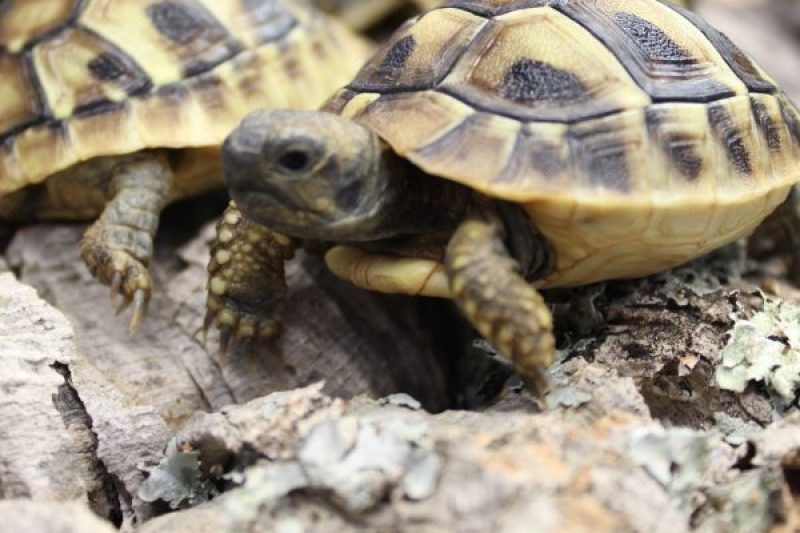
Tarantula care guide
Welcome to Evolution Reptiles’ guide to tarantula care! Whether you’re a seasoned arachnid enthusiast or just starting your journey into the fascinating world of these

Whatever happened to common or garden tortoises?
In short, they died.
It is not, of course, that simple. Many of us remember the old days when tortoises were freely available, a very common pet; if you didn’t have one yourself then you had a neighbour or family member who had one. In the spring every pet shop had a crate of tortoises in pride of place in the centre of the floor – and if you were wise you took one from the top, as the ones underneath were often already dead.
The statistics (Tortoise Protection Group)make for grim reading. Between 1969 and 1972 (just 3 years) a total of 480,000 Spur-thighed tortoises were imported into Britain – and they were just one of three commonly imported species. Of all those imported animals, only a tiny fraction are still alive today.
It has been estimated by the British Chelonia Group that out of every 100 tortoises imported, 99 of them did not survive their first winter.
We were doing everything wrong. Wrong food, no extra lighting, no extra heat, wrong supplies, no pools; these animals were being taken from the wild and dropped into British gardens and expected to survive. Imagine – being taken from the blazing heat of a Greek hillside and dumped in a lush, green, damp garden. There’s lots to eat, but you’re too cold to digest it properly. And you don’t know what’s toxic and what’s not.
The change in temperature alone was enough to kill some, and even if they survived the summer then they had the horrors of a frosty garden shed while trapped in a cardboard box filled with straw. If they didn’t freeze to death they were often eaten alive by rats and mice. If you were shut in a box in the airing cupboard, then you had six months of starvation to look forward to because you would be far too warm to actually hibernate. Even if the temperature was stable and you had put on a reasonable amount of weight over the summer then you still might not survive, as you would be left in the cardboard box for twice as long as you had evolved to hibernate. Six months is far, far too long.
It’s a testament to how astonishingly tough these animals are that any survived at all. And some did; we are still sometimes asked for advice by people who have inherited elderly tortoises from relatives that are confused by all the conflicting advice online. Plus some of these elderly animals are now starting to struggle with the care regimes that they have survived for all these years – after all, they are like us in that what can be survived in your twenties is much, much harder to survive in your eighties!
People love their tortoises. They loved them before the ban and they love them now, which is why we are often asked for a ‘garden tortoise’. (An occasional variation being ‘Old English garden tortoise’.) And whilst all tortoises absolutely do benefit from spending time in the garden – any reputable dealer, pet shop, breeder or rehoming centre won’t let a tortoise go to a home where it will be kept exclusively indoors – they should not be living out there all year round. Or even all summer long, unless the conditions are Mediterranean all summer. Which is, let’s face it, pretty unlikely here in our delightfully damp and chilly island.
So before you set out to purchase your garden tortoise ask yourself this:
If being left in the garden was an OK way to keep them, how come the Mediterranean tortoise vanished from our lives almost completely the first year after the ban?
That’s how few survived each year. That’s why we had to learn new ways of keeping them happy and healthy. That’s why new products were developed to closely mimic what the tortoise would experience in the wild – and that is why there is no such thing as a ‘common or garden tortoise’.
Please scroll down to leave a comment about your experiences with tortoises.[/vc_column_text][/vc_column][/vc_row][vc_row bg_color=””][vc_column width=”2/3″][ish_separator type=”text” tag_size=”h4″ align=”center”]Tortoises Currently Available[/ish_separator][/vc_column][vc_column width=”1/3″][ish_social_share][/vc_column][/vc_row][vc_row bg_color=””][vc_column width=”1/1″]
[/vc_column][/vc_row]
Welcome to Evolution Reptiles’ guide to tarantula care! Whether you’re a seasoned arachnid enthusiast or just starting your journey into the fascinating world of these

How to Care for Your Reptile During a Power Cut Power cuts can be stressful, especially when you have a reptile that relies on a

Buying a Pet from Evolution Reptiles: the process Buying a new pet of any kind can be an exciting experience, getting everything ready for it,
Copyright 2021 Evolution Reptiles
All rights reserved.